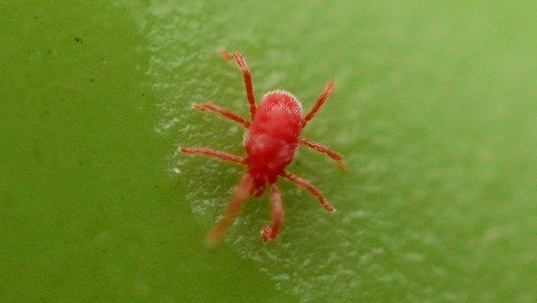For a bug so small that you can hardly spot it with the naked eye, chiggers can cause a lot of pain in your Houston home. This member of the mite family is fire engine red in color and resembles a hybrid of a tick and bed bug, with its flat ovular shape that resembles an apple seed, six legs, and a set of antennae. But don’t be fooled, oftentimes chiggers get confused for clover mites, but they’re two very different insects. These tiny pests will latch onto you, feeding until they can’t anymore, and leave behind tremendously painful and unsightly welts that can prove for a very uncomfortable summer.
How To Know If You Have A Chigger Problem
Unfortunately, a chigger problem can only be detected by their nasty bites, which makes understanding your dilemma more uncomfortable than you might wish it would be. There are a few things you should know to better understand if what you’re dealing with is chiggers:
- Once chiggers have found your skin, they latch on with their sharp claws and take a bite, injecting their irritating saliva.
- These bites leave behind itchy red welts with a hard, white center. Sometimes the swelling is accompanied by fever and these symptoms may take three to six hours after being bitten and may occur for a week.
- Scratching can cause a secondary infection.
- When a chigger has latched onto you, they can feed for four days, if left undetected.
Sometimes these bites are confused with scabies, and while scabies are caused by mites, these are two distinct conditions. Additionally, scabies is contagious and chiggers are not.
What You Need To Know About Chiggers
Chigger bites are painful and unsightly. To enjoy your summer outdoors a little bit more, here are a few key things you need to know about chiggers:
Climates & Locale
This pest seeks damp, grassy areas, areas of high moisture like streams and lakes, and woodlands. They lay their eggs close to the ground and hop around like parasitical hitchhikers, which makes it easy for them to latch onto passersby. They are most active in spring and summer when greenery is at its lushest; however, chiggers are active year-round.
Habits
Chiggers are most active in late spring and summer, latching onto the area around your waist, armpits, ankles, behind the knees, and elbows. Houston residents should be particularly cautious in areas of high vegetation and lush grass.
Preventing Bites
When it comes to chiggers, preventing their bites is key. Here are a few ways to keep them away from you: use DEET on exposed skin; wear long, light-colored clothing; treat your clothes with human-safe repellents; avoid walking in areas of high grass; and wash clothes immediately after spending time outdoors or on hiking trails. You should also shower immediately upon spending time outdoors, as chiggers tend to crawl around and spread, so one check is not sufficient.
Give Them The Boot
You can also work to prevent chiggers from congregating around your property by making sure that your lawn is mowed and that all weeds and settled vegetation are removed. You can also address areas of excess moisture (i.e. birdbaths, kiddie pools, dog dishes) and anywhere that may be consistently shady (i.e. overgrown trees and hedges), as these are two characteristics that chiggers seek to make their home.
The best form of protection against chiggers is with ongoing professional pest control for your Houston property. Contact All-Safe Pest & Termite today for more advice and a plan of action.

